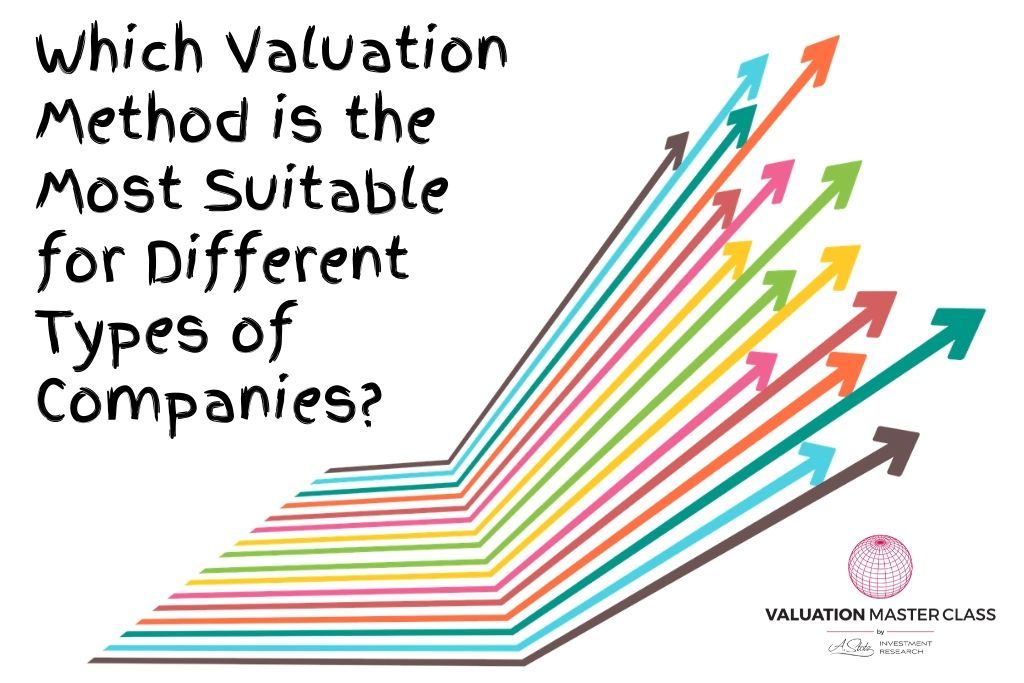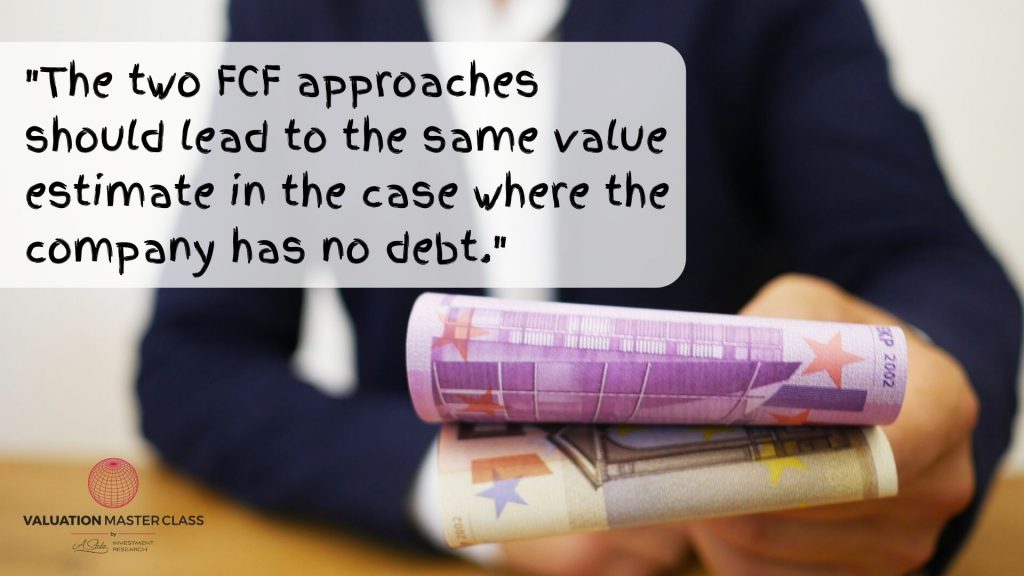Which Valuation Method is the Most Suitable for Different Types of Companies?

This is a Valuation Master Class student essay by Jana Kristofova from May 29, 2018. Jana wrote this essay in Module 2 and has since completed all five modules of the Valuation Master Class.
Nowadays, we hear more and more that the stock market is overvalued. What does it mean? It means that the intrinsic value of the company is lower than the current stock price.
There are two main types of valuation methods – absolute and relative. Relative valuation methods are based on the principle that the valued company is compared to other companies with the same characteristics in the pre-defined universe (Company Comparable Analysis) or a similar previous deal (Precedent Transaction Analysis).
Absolute valuation is based on the following methodology – future cash flows are predicted, discounted to the present value, and then the intrinsic value is calculated. There are three main absolute valuation methods: Dividend Discount Model (“DDM”), Free Cash Flow to Firm (“FCFF”), and Free Cash Flow to Equity (“FCFE”). The main challenge is to decide which method is suitable for what company.
Therefore, the main purpose of this paper is to describe each of those methods and to define its suitability and limitations.
Valuation Methods Overview
Pinto et al. (2007) defined Valuation as “the estimation of an asset’s value based either on variables perceived to be related to the future investment returns or on comparisons with similar assets.” When a relative valuation method is used, the company is valued by comparing it to a similar company with the same characteristics in the pre-defined universe (Company Comparable Analysis). In mergers and acquisitions (M&A), companies can be valued by comparing them to similar M&A deals from the past.
The absolute valuation is based on a more complex methodology – future cash flows are predicted, discounted to the present value, and then the intrinsic value is calculated. There are three main absolute valuation methods – DDM, FCFF, and FCFE. Each method has its limitations.
Breakdown of DDM, FCFF and FCFE Formulas
DDM:
Cash flow (expected dividends paid to stockholders) = D0 * (1 + g) t
Where
D0 = Current dividend payment
g = constant expected growth rate
t = time period
The discount rate used in this model is the Cost of Equity. In general, the riskier the investment, the greater is the cost of equity.
The CAPM formula for Cost of Equity calculation:
Cost of Equity = risk-free rate + beta*(market risk premium)
FCFE:
Cash flow (FCFE) = Net income – (1 – debt ratio)* (CAPEX – Depreciation) – (1 – debt ratio)* Changes in working capital
The discount rate used in this model is the Cost of Equity. In general, the riskier the investment, the greater is the cost of equity.
FCFF:
Cash flow (FCFF) = EBIT*(1 – tax rate) – (CAPEX – Depreciation) – changes in working capital
The discount rate used is the weighted average cost of capital (WACC) and is calculated as follows:
WACC = ke*(E/ (D+E)) + kd*(D/(D+E))
Where
E = market value of equity
D = market value of debt
kd = current borrowing rate * (1-t)
t = tax rate
ke = cost of equity (CAPM)
When to Use DDM, FCFF, and FCFE?
DDM is used in the valuation of stable firms in a mature stage that pay dividends. This model is also suitable for companies that are difficult to value (e. g. banks or financial service institutions). When, compared to the value calculated by FCFE valuation, the value calculated by DDM is around the same level over the extended period, DDM is an appropriate method to use.
When the company’s capital structure is stable, FCFE is the most suitable. Additionally, according to Damodaran FCFE is used for companies that are paying dividends which are significantly higher (more than 110% of FCFE) or lower than FCFE (less than 80% FCFE over five years); or when dividends are not available (in case of private companies or IPOs). The two FCF approaches should lead to the same value estimate in the case where the company has no debt.
Kaplan Schweser (2008) pointed at two cases when FCFF is the best method to be used:
First, FCFF is used for valuing a leveraged company with negative FCFE. Therefore, using FCFF to value the company’s equity is easier. FCFF is discounted so that the present value of the total firm value is obtained, and then the market value of debt is subtracted. The outcome of this calculation is an estimate of the intrinsic value of equity.
Second, FCFF is used for a leveraged company with a changing capital structure. If historical data are used to forecast FCF growth rates, FCFF growth will reflect fundamentals more clearly than does FCFE growth. FCFF reflects fluctuating amounts of net borrowing. Furthermore, in a forward-looking context, the required ROE might be more sensitive to changes in financial leverage than changes in the WACC, making the use of a constant discount rate difficult to justify.
Limitations of DDM, FCFF, and FCFE
Each of the methods mentioned above has its limitations.
DDM is very sensitive to a dividend growth rate and assumes the dividend growth rate will not change.
FCFF and FCFE are based purely on inputs and assumptions. It is difficult to use them for forecasting of a cyclical business.
Conclusion
When valuing a company, it is important to assess the company and its stage. Based on that, the most suitable method shall be chosen. Also, an outcome of company comparable analysis helps to create an overall picture and to value a company the best way possible.
References
Damodaran, A. Discounted Cashflow Valuation: Equity and Firm Models (accessed online on 25 May 2018).
Kaplan Schweser (2008). Free Cash Flow Valuation. Study Session 12 (accessed online on 25 May 2018).
Pinto, J. et al. (2007). Equity Asset Valuation (CFA Institute Investment Series). 2nd Edition, Kindle Edition, CFA Institute.
Stotz, A. (2017). Slimwiki (Notes). A. Stotz Investment Research.

